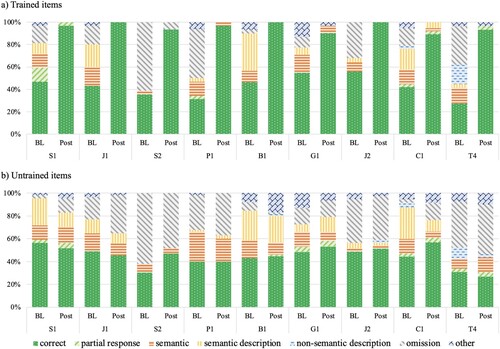Figures & data
Figure 1. Coronal T1 weighted MRI of the medial temporal lobe for each participant. Note. The left hemisphere is shown on the right. Participants SD-P1 and SD-C1 show greater right sided atrophy.

Table 1. Demographic and clinical profile of study participants.
Table 2. Response coding.
Table 3. Pre- and post-intervention rates of accuracy, misuse and perseveration by individual at baseline (BL) and post-intervention (number correct or number of misuses/total number of stimuli).
Figure 2. Individual error profiles at baseline and post-intervention for (a) trained items and (b) untrained item.

Table 4. Percentage of errors of each type for trained and untrained items at baseline and post-intervention combined across participants (n = 9).
Table 5. Wilcoxon tests for each participant and for all participants as a group.
Table A1. Number of items in each list by participant.
Table A2. Example list items (as for participant B1).
Table B1. Detailed error coding.
Table B2. Clarity of response scoring.
Table C1. Instances of misuse of list items pre- and post-intervention by participant.
